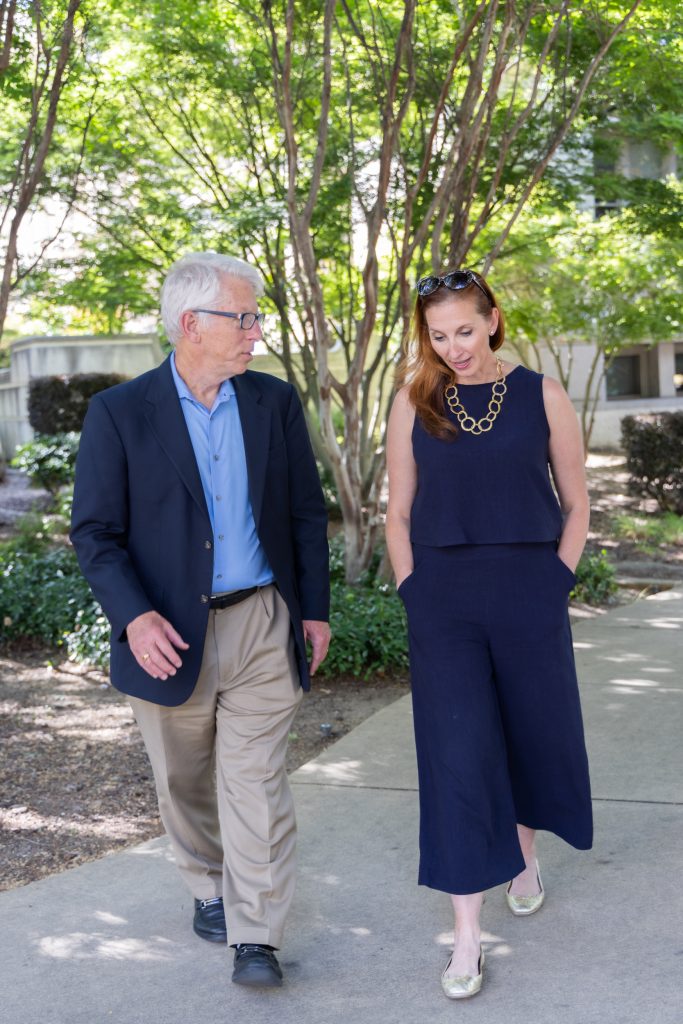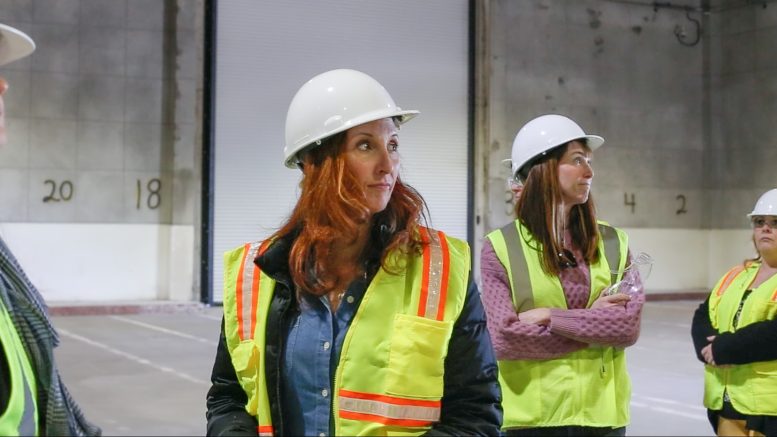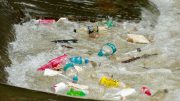Last month, I sat down with Rachel Machi Wagoner, who heads California’s Department of Resources Recycling and Recovery, better known as CalRecycle. Our talk was so wide-ranging, we decided to break it into two stories for SN&R: Part 1 focuses on SB 1383 and organic waste. And this second part is the discussion we had about other important legislation, as well as the governor’s zero-waste proposal.
Both pieces highlight the tremendous rethinking happening in our state about the environment. In fact, CalRecycle recently updated its mission statement so it reflects this commitment: ‘Protecting California’s environment and climate for the health and prosperity of future generations through the reduction, reuse and recycling of California resources, environmental education, disaster recovery and the transition from a disposable to a fully circular economy.’
The second major piece of legislation is SB 54, the plastics bill, that requires by 2032 100% of packaging in the state to be recyclable or compostable, a 25% cut in plastic packaging, and 65% of all single-use plastic packaging be recycled. The legislation also shifts the plastic pollution burden from consumers to the plastics industry by raising $5 billion from industry members over 10 years. CalRecycle will be doing the heavy lifting on this—can you talk about what’s happening in this area?
SB 54 has some very tight deadlines and we are up for the challenge at CalRecycle. I’m really inspired by the staff here at this department and how quickly they saw this mandate, jumped in and said, ‘let’s get to work.’
We’re the first in the nation to do anything comprehensive in this area. And we’re on our fourth informal regulations workshop (where we explain the) concepts—how we’re going to roll this out—and interested parties come talk to us about their views.
By summer, we will start writing the regulations and start the formal rule-making process so that we have them in place by the deadline. CalRecycle has implemented four other extended producer responsibility programs. None of this magnitude, but we’ve learned a lot over the last decade-plus on what works with EPR.
We are taking that knowledge and that experience and applying it to how we build this program. It will be critically important for our industry partners to come forward. They are a part of our workshops (now) and ask their questions, saying, ‘How will this work? And how will that work?’ We want investments here in the state to make our system fully circular—and not only remove plastic waste from the landfills, but start thinking about how we decrease the amount of raw materials we’re using in the first place.
We’ve more than doubled our production of plastic since the inception of plastic. We are going in the wrong direction. We need to halt our production of single use materials and pivot to a more sustainable and reuse culture. Then what we do produce, make sure it’s getting into a recycling stream.
So, it is a big job.
You mentioned you’ve learned a lot and feel more confident doing the plastic program because of the other EPR programs. What would be the three main things you’ve learned?
The five-year plan that is put forward by the product stewardship organization needs to be comprehensive and it needs to show how it’s going to hit every requirement.
Accountability is also critically important. And a clear understanding from the regulatory agency, as well as the industry, of what happens next if you don’t meet the mark.
Third, I would say on-going communication between the product stewardship organization, the industry, the regulator, us and the community needs to be clear. Transparency is 100% critical.
So a comprehensive plan, accountability and transparency.
Over the years, bills have been passed—the bottle bill, tires, electric waste, paint. At the end of the day, they all have the same component: money is being collected to help mitigate the cost of proper waste disposal. So if we added up all the programs, what are the annual revenues for the combined tires, batteries, e-waste, etc.?
Billions of dollars. The beverage container recycling program alone is $1.5 billion every year. It’s a lot of money.
If we look at the legislation, they all were done individually, right? But for the consumer it’s here’s what I need to do on hazardous waste, here’s my mattress information, here’s my paint information, here’s my battery information. Is there a need to make greater efficiencies for the programs?

I love that. That’s exactly Governor Newsom’s thinking (too): He put forward a zero waste plan in his budget this year. What it’s meant to do is look at the breadth of how we create waste, where it goes, all of our recycling programs, identify the gaps in our circular economy and then start to fill them. It is very much ‘how do we talk to consumers about what they’re supposed to be doing when they’re done with something?’
We landfilled 41 million tons of waste last year. That’s roughly a ton per person in the state of California. That’s crazy. How do we stop doing that? When we recycle, how do we make sure that it’s truly being recycled? Only 40% of what we created and consumed last year ended up recycled. How do we address that? … And can we reduce the amount that we’re producing, reduce the amount we’re extracting in terms of raw materials?
Our zero waste plan will draw the picture, the landscape of where we are today. It will be the road map for how we get to a (circular economy) in California.
… (Which is) critically important. We did an evaluation with Accenture, which has been doing a lot of work in the circular economy. If California had a fully circular economy today, we would have an additional $142 billion economic benefit to the state. Not just taxes, economic benefit. … We are quite literally throwing that money away right now because we have so much waste.
If we could reduce that waste right from the beginning—and at every point of the supply chain—we could realize not only the economic benefit, but the environmental benefit. And we could also build the (necessary) markets here in California, so, for a great example, we’re not shipping steel to China to be shipped back to us as a new product. We ship a lot of material overseas or to other states. Paper is another great example. We collect all the paper and send it someplace else to be pulped and then we bring it back to be manufactured.
I’ve just been stunned in terms of the changing narrative. When I talked to (State Senator) Ben Allen, I asked him who were some of the real partners in getting SB 54 through and he said the California Chamber of Commerce. Never in my wildest dreams did I think that would happen. Do you have some thoughts on where we’re going and what the messaging needs to be?
I think the economic benefit that is realized even in our own households (is an important message). To go back to SB 1383, the organic waste bill, for instance, the average household throws away $1,500 worth of food every year in California. If I just slightly pivot how I purchase food and make sure that I’m not buying things I’m ultimately going to throw away, I can realize that economic benefit of an additional $1,500 in my pocket every year. That’s true at the larger scale as well, and I think our industry partners are starting to see this as well—that waste is cost.
And from the regulator side, there’s almost a competition starting to form. Pepsi and Coke are now trying to compete to see who can get a 100% recycled content bottle to the market first. That’s really exciting to see the industry engaged in a way where they’re saying, ‘We recognize what our consumers want. Especially this next generation not only wants but demands us to be better and better stewards of this planet and so we’re making that a part of our brand.’
To pick up on that point, the expansion of the bottle bill to add wine came from the industry. Why don’t you talk a little bit about the that, and then also some of the challenges with the bottle bill?
All my favorite topics today—and all the things that I spend my days thinking about. It was really exciting when I was in the governor’s office, some of the key players within the wine industry who do a lot of the bottling, Gallo and Kendall Jackson, came forward and said, ‘We would like to be part of a recycling system.’ They were ready to roll up their sleeves and create a statewide system, because they’re now recycling and making their own bottles here in the state of California. This is a great example of the circular economy. We will collect it here, we’ll recycle it here, and we’ll re-manufacture it here.
That willingness to problem-solve is lending itself to a very quick expansion of our system to incorporate glass. But glass is a more challenging material to collect and transport because of its weight, because of the breakage, etc. We are working right now with the industry to figure out how to build a collection system so that we maximize the amount of material back into the recycling system here. Because they’ve come forward and want to be a part of the solution, it is a lot easier.
What steps are being implemented?
In addition to adding wine and distilled spirits to the beverage container recycling program, the other thing that SB 1013—Senator Atkins’ bill—did, which I thought was really innovative, was it created a new opportunity for collection in areas of the state where we don’t have easy access to recycling centers. That has always been a challenge in this program, how to make recycling centers sustainable.
Areas that are very rural or very urban—dense areas like San Francisco—have challenges with maintaining recycling systems. So one of the things 1013 did was it created a provision that allows the dealers—the grocers, the retailers who are selling the beverage containers—to set up co-ops where they work together for an unserved region of the state.
I really imagine (this working in) areas of Sonoma, Napa, or even Mendocino counties, where (there are a lot of wine sales)—we’ll be able to help build partnerships between the distributors and dealers. Then the wineries get those bottles back either through our new pilot project for reuse of glass containers or into our recycling system.
There is a lot of evolution happening in the next two years in this program. It’s been desperately needed for the last decade and it’s a great opportunity for us to work with those in the industry.
What important legislation is coming up?
I just met with our legislative director yesterday to go through the bills this year. I think most of them are really aimed at evolving what we’re currently doing, so I’m very focused on implementation right now. We have SB 54, we have this evolution in the beverage container recycling program, obviously SB 1383 implementation, a new battery program that we have to implement, the expansion of our e-waste program to include anything with a battery embedded in it.
This coming year I’m really very focused on the governor’s zero waste plan. That’s what I would like to do, build this road map for California so all of those silos are broken down and Californians can say, ‘I understand what I’m supposed to do. I am committed to what we’re doing here. This is where we’re going. I know how to do it.’
That would be great, it’s what gets me up every day.
So what question should I have asked you but didn’t?
One thing that I would like to emphasize is that this doesn’t have to be hard. It’s complex, but it doesn’t have to be complicated. Small changes in our lifestyle will have an absolutely critical and huge impact on our environment. They don’t have to feel like sacrifices. I’m always thinking about how can I talk about this differently so that people feel inspired the way that I do, and one of the realizations that came to me this morning is I feel like environmentalism has always been presented as some big sacrifice that you need to make in your life. This isn’t a sacrifice. This is an absolute benefit that we all will garner from just small changes in our lifestyle.
I am absolutely inspired every day by the people of the state of California. They want to save this planet. They believe in the mission. They are inspired by the environment, the beautiful environment, that we’re surrounded by every single day. So I get up each day and come to work to serve them to the best of my ability.






Be the first to comment on "Rachel Machi Wagoner of CalRecycle discusses the benefits of a circular economy in California"